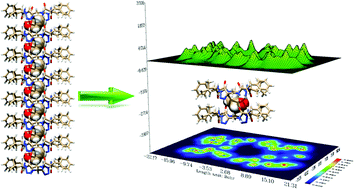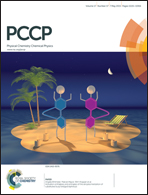A combined molecular dynamic and quantum mechanic study of the solvent and guest molecule effect on the stability and length of heterocyclic peptide nanotubes†
Abstract
Molecular dynamic simulations were performed to investigate the stability of heterocyclic peptide nanotubes composed of 1,4-disubstituted-1,2,3-triazol ε-amino acid. 45 ns MD simulations were conducted on the cyclic peptide nanotube (CPNT) and cyclic peptide dimer in methanol, chloroform, and water and revealed that these structures are more stable in nonpolar solvents. MM-PBSA and MM-GBSA calculations were employed to analyze the solvent effect on the stability and length of the CPNT. These calculations showed that CPNT in chloroform was more stable and longer as compared to other solvents. In addition, the effect of the guest molecule (ethanol) inside the dimer and CPNT was investigated. The obtained results confirmed that guest molecule(s) stabilized the dimer and CPNT in all solvents. Quantum chemistry calculations on the cyclic peptide dimer were performed at the M06-2X/6-31G(d) level in the gas phase and three solvents. The obtained results from the quantum chemistry study were in good agreement with the MD simulation results. DFT calculations showed that the guest molecule stabilized the dimer structure and electrostatically interacted with the cyclic peptide dimer. Finally, for investigation of the solvent effects on the hydrogen bonds of the cyclic peptide dimer, NBO and AIM analysis were performed.


 Please wait while we load your content...
Please wait while we load your content...